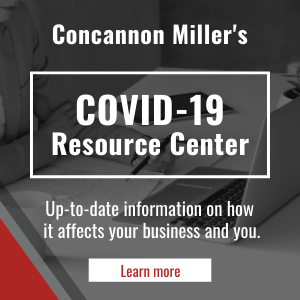 At long last, there’s some guidance on how businesses can seek forgiveness for their Paycheck Protection Program loans.
At long last, there’s some guidance on how businesses can seek forgiveness for their Paycheck Protection Program loans.
Late last week, the U.S. Small Business Administration released a PPP loan forgiveness application and instructions, which you can access here. We spent the weekend reviewing this application and instructions and thought it would be helpful to you for us to share some of the most relevant highlights from this latest guidance.
We’ll have more to come in the future on documentation and other less significant aspects of the latest guidance. For now, here’s the most important information to know:
- The SBA will allow the borrowers (with a biweekly or more frequent payroll schedule) to use an Alternative Payroll Covered Period which allows you to elect to calculate eligible payroll costs using the eight-week period that begins on the first day of your first pay period following the disbursement of the PPP funds, rather than the first day of disbursement. This will certainly make things easier for most.
- A borrower may deduct payroll costs that are paid or incurred during the covered/alternative payroll covered period. For payroll costs that are incurred but not paid during the borrower’s last pay period, these costs can be included as eligible costs if the borrower pays them by their next regular payroll date. Otherwise, the SBA’s guidance says that payroll costs must be paid during the covered period or the alternative payroll covered period to be eligible.
- Eligible nonpayroll costs must be paid or incurred during the covered period. For those incurred but not paid during the covered period, they must be paid on or before the next regular billing date, even if that date is after the covered period.
Guidance on Full-time Equivalents (FTE)
 A full-time equivalent (FTE) will be defined as 40 hours, not 30 as we originally assumed per the Affordable Care Act law.
A full-time equivalent (FTE) will be defined as 40 hours, not 30 as we originally assumed per the Affordable Care Act law.- The SBA provided a list of FTE reduction exceptions, stating that a borrower will not be penalized for FTE reductions that occur as a result of the following circumstances:
- Reductions related to any employees for which you made a good-faith, written offer to rehire but the offer was rejected,
- Reductions related to employees who were fired for cause during the covered/alternative payroll covered period,
- Reductions related to employees who voluntarily resigned or voluntarily requested a reduction of their hours during the covered/alternative payroll covered period
- Good HR records are critical with respect to these exceptions.
- As most are aware, there are two ways that forgiveness could be limited – reduction in FTEs or a reduction in salaries or wages paid of more than 25%. In this latest guidance, they have provided a safe harbor for both.
- The Salary/Hourly Wage Reduction Safe Harbor mentioned in the instructions provides that if there are reductions of greater than 25% between Feb. 15 and April 26, 2020 and if those reductions are restored by June 30, 2020, then the borrower will be exempt from the salary/hourly wage reduction.
- The FTE Reduction Safe Harbor says that a borrower is exempt from the reduction in loan forgiveness based on FTE employee levels if they reduced their FTE levels between Feb. 15 and April 26, 2020 and if by no later than June 30, 2020, they restored their employee level to the FTE level that existed during the pay period that included Feb. 15, 2020.
More Guidance to Come
Based on everything that we are reading, this does not look like the “last word” we will hear on PPP.
At a minimum, in the SBA’s announcement Friday, they stated that they will “soon issue regulations and guidance to further assist borrowers as they complete their applications, and to provide lenders with guidance on their responsibilities.” Additionally, The Wall Street Journal and other news outlets have reported that “changes are likely to include giving businesses more flexibility to spend the money.”
The Treasury Secretary said in an interview last week that “technical fixes” would be made to address concerns. It’s been said that changes are expected to come in two waves – technical fixes from the Treasury Department and SBA would come first, and then broader changes which may require congressional action could come later.
We will continue to keep you updated and share our insights and perspective. In the meantime, please contact us with any questions.





